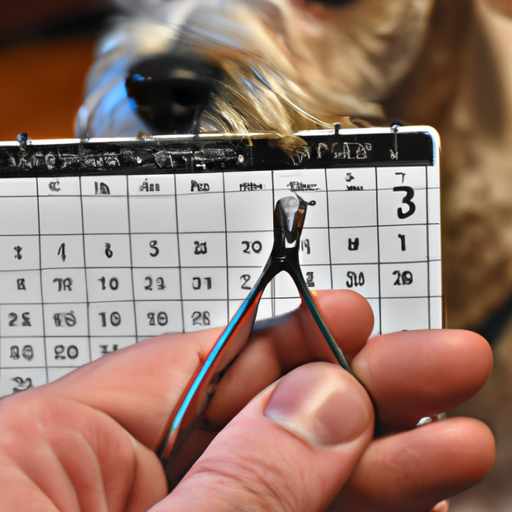Understanding Your Dog’s Paw Anatomy
Firstly, it’s essential you understand your dog’s paw anatomy. As a caregiver, you might already know that a dog’s paw consists of the pad, the nails, and the quick, but do you understand the role each part plays?
- The Pad: Works like a cushion to absorb the shock during movement.
- The Nails: Provide grip and support while walking or running.
- The Quick: A sensitive part of the nail that supplies blood to the nail. It is generally not visible in dark-colored nails.
When you trim your dog’s nails, you have to avoid cutting into the quick as it could cause pain and bleeding.
Identifying the Right Time to Trim Your Dog’s Nails
Your dog’s lifestyle often dictates the frequency of nail trimming. Dogs that spend a lot of time outdoors running on hard surfaces may wear their nails down naturally. On the contrary, indoor dogs or those walking on soft surfaces might need more frequent nail trims.
As a general rule, if you hear your dog’s nails clicking on the floor, it’s a sign that they are too long and it’s time for a trim. Typically, most dogs will need their nails trimmed every 3-4 weeks.
Nail Trimming Techniques and Tools
There are several techniques you can use to trim your dog’s nails.
- Clippers: Clippers are easy to use and come in two types – the guillotine type and the scissors type.
- Grinders: Nail grinders are electronic tools that grind down the nail instead of cutting it sharply. They are a great option if your dog is scared of clippers but can be noisy.
- Filing: You can also manually file your dog’s nails, though this is more time-consuming.
Choose the tool and technique that feels most comfortable for both you and your dog.
Potential Risks of Long Nails
Long nails can cause a variety of problems for your dog. Here are a few:
| Potential Problems | Explanation |
|---|---|
| Walking and Running Issues | Long nails can cause discomfort and affect your dog’s gait, leading to skeletal damage over time. |
| Nail Splitting or Breaking | Long nails are more prone to splitting or breaking, which can be painful and lead to infections. |
| Nail Bed Infections | Dirt can get trapped under long nails, leading to nail bed infections. |
Establishing a Nail Trimming Routine
Establishing a routine for nail trimming can make the process smoother for you and your dog. Start by getting your dog comfortable with their paws being handled. Gradually introduce the nail trimming tools and reward your dog for staying calm during the process. Consistency is key here. With time and patience, nail trimming can become a stress-free grooming routine for your dog.
Frequently Asked Questions
Q: What if I accidentally cut the quick?
A: Don’t panic. Use styptic powder to stop the bleeding and comfort your dog.
Q: My dog has black nails. How can I avoid cutting the quick?
A: Trim a small amount at a time and look for a dark spot in the center of the nail. This indicates you are nearing the quick.
Q: Can I use human nail clippers for my dog?
A: No. Human clippers can crush a dog’s nail. Use clippers designed for dogs.
Q: What if my dog is terrified of nail trimming?
A: Try to desensitize them slowly over time. If it’s still a struggle, consider hiring a professional.
Remember, as a dog caregiver, it’s your responsibility to keep your furry friend comfortable and healthy. Regular nail trims are a small but essential part of that duty.



